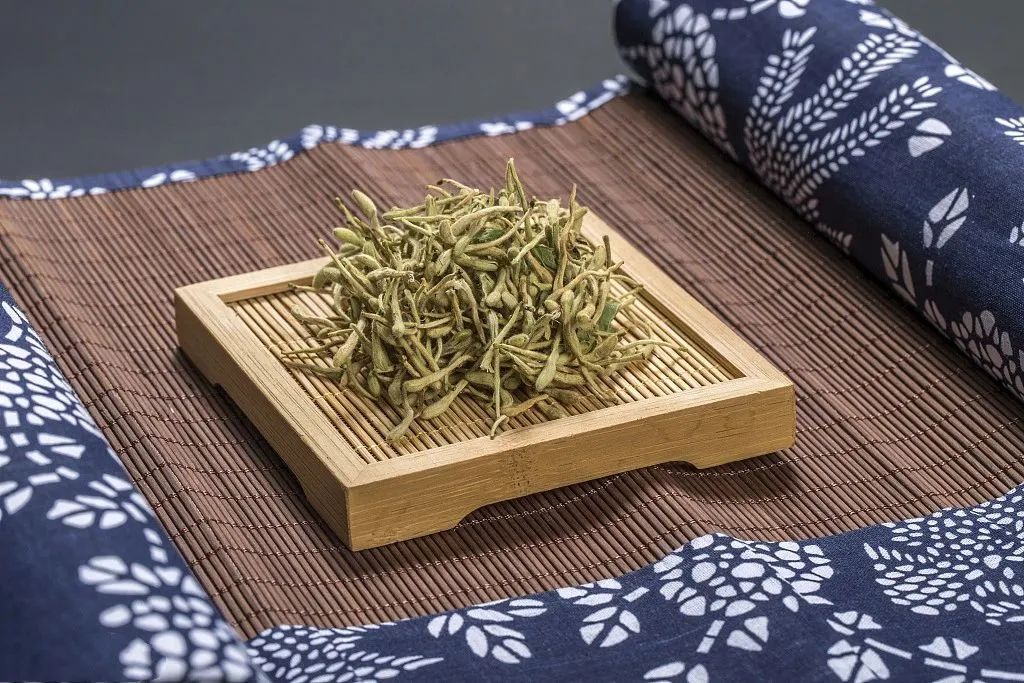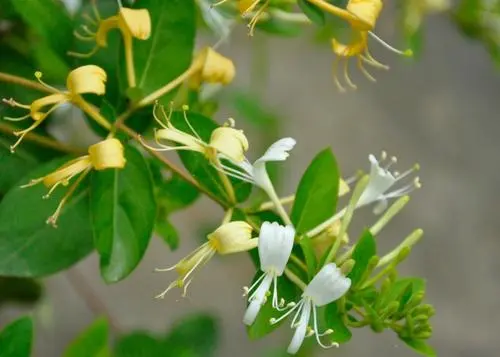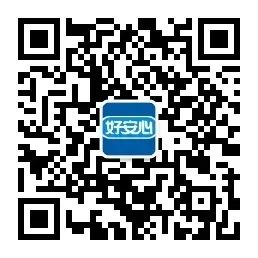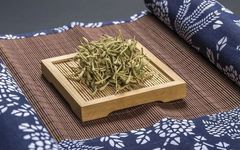
Click the blue text above to follow us


Honeysuckle (Jin Yin Hua)

Also known as: Lonicera japonica Thunb. (Honeysuckle), it is the dried flower buds or newly opened flowers of the plant from the Caprifoliaceae family. The medicinal use of honeysuckle began in the Jin Dynasty, where it was referred to as “Ren Dong” in medical texts, first documented in Ge Hong’s “Zhou Hou Bei Ji Fang” and later in the “Ming Yi Bie Lu”. The name “Jin Yin Hua” appeared in the Song Dynasty. The “Compendium of Materia Medica” provides a detailed explanation of the name: “When the flower first opens, both the stamens and petals are white; after two or three days, the color changes to yellow, hence the name Jin Yin Hua (Gold and Silver Flower).” Today, honeysuckle is widely recognized in modern medical literature and included in the “Chinese Pharmacopoeia”. The main production areas are Shandong, Henan, and Hebei provinces.
Efficacy

Efficacy: Clears heat and detoxifies, disperses wind-heat.
Nutritional Value: Contains chlorogenic acid, inositol (1%), volatile oils, terpenes, phenolic acids, and other chemical components, including cynaroside, isochlorogenic acid, β-sitosterol, and soyasaponin.
Suitable for: Generally safe for consumption by the public.
Contraindications: Not recommended during menstruation; use with caution for those with spleen and stomach deficiency and cold.
Combination with Other Herbs

Honeysuckle has no significant toxic side effects and can be combined with various other herbs, such as Chrysanthemum (Ju Hua), Peppermint (Bo He), Bamboo Leaves (Zhu Ye), Licorice (Gan Cao), and Ophiopogon (Mai Dong). Below are two common preparation methods:
 Honeysuckle Chrysanthemum Tea
Honeysuckle Chrysanthemum Tea
Ingredients: 15g of honeysuckle, 5 chrysanthemum flowers, appropriate amount of white sugar or rock sugar.
Preparation: 1. Place honeysuckle, chrysanthemum, and sugar into a teacup. 2. Add boiling water to steep. 3. Stir until the sugar dissolves. 4. Cover and let steep for 10-15 minutes. 5. Allow to cool slightly before drinking.
 Honeysuckle Peppermint Tea
Honeysuckle Peppermint Tea
Ingredients: 10g of honeysuckle, 10g of peppermint, appropriate amount of honey.
Preparation: 1. Place 10g of honeysuckle and peppermint into a cup. 2. Pour boiling water to steep. 3. Cover and let steep for about 15 minutes. 4. Add honey to taste before drinking.
Clinical Effects

1. Clears Heat and Detoxifies
Honeysuckle is cold in nature and has excellent heat-clearing and detoxifying properties, effective against febrile diseases, heat-toxicity dysentery, and carbuncles. Those with chronic heat conditions can also benefit from drinking honeysuckle tea, which helps to reduce heat and alleviate symptoms such as headaches, swollen gums, dry mouth, irritability, and insomnia.
2. Antibacterial and Anti-inflammatory
Honeysuckle can promote the release of adrenal cortex hormones, thereby inhibiting and alleviating inflammation. It is particularly effective against Staphylococcus aureus, Escherichia coli, Shigella, Streptococcus pneumoniae, Neisseria meningitidis, influenza virus, herpes virus, and leptospirosis.
3. Enhances Immunity
Regular consumption of honeysuckle tea can enhance the phagocytic ability of white blood cells, allowing for timely elimination of foreign pathogens, thereby boosting the body’s immunity and reducing the incidence of diseases.
Consumption Precautions

1. Not recommended during menstruation;
2. Not suitable for daily consumption;
3. Use with caution for those with spleen and stomach deficiency and cold.
How to Store?

Store in a dry, sealed container.
 Scan to follow us
Scan to follow us
Image source/Network
Text source/Network


